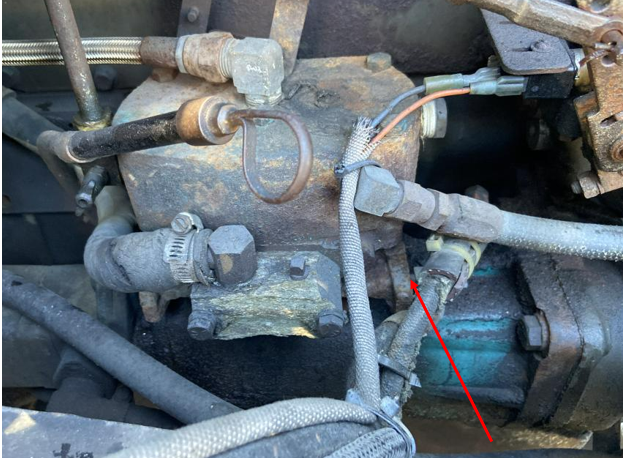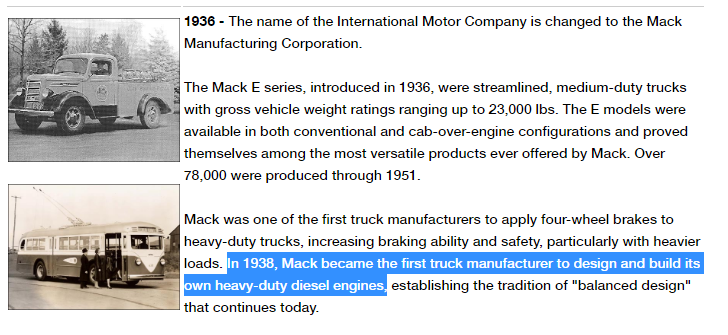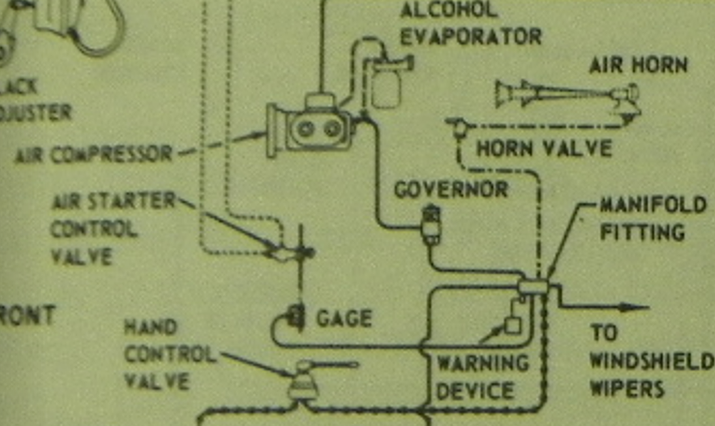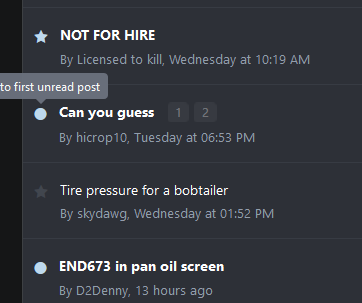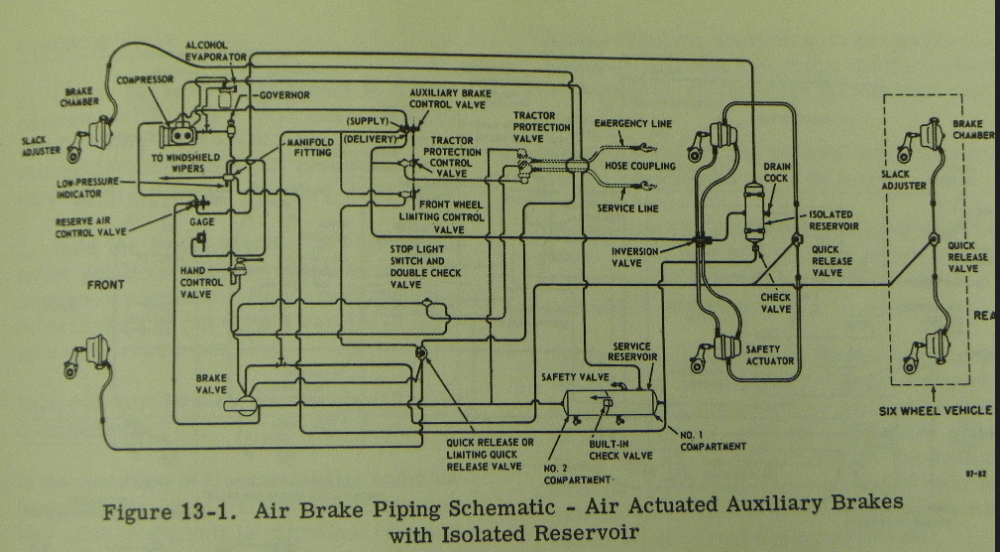-
Posts
2,624 -
Joined
-
Last visited
-
Days Won
37
Content Type
Profiles
Forums
Gallery
Events
Blogs
BMT Wiki
Collections
Store
Everything posted by doubleclutchinweasel
-
Here's another link. https://manualsbrain.com/en/manuals/769543/ Sorry if I sound stupid on this one. The governor connection on mine was on the END of the head. That may not be the case with this one. If I'm off base, don't beat me too badly, Joey!
-
That looks a little bit like a 700, which is slightly different from the 550 I had on mine. Is that the unloader port, where the red arrow is pointing? If it is a 700, here's a link that might help. https://n0c357rmy1njbuit2friqwu.blob.core.windows.net/documents/R7UJunINI0EBhB_SD-01-335_US_000.pdf
-
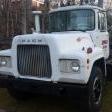
Can you guess
doubleclutchinweasel replied to hicrop10's topic in Antique and Classic Mack Trucks General Discussion
-

Can you guess
doubleclutchinweasel replied to hicrop10's topic in Antique and Classic Mack Trucks General Discussion
I THINK it was in the late '30s when they actually built their first in-house diesel engine. 1938 maybe? Of course, they continued to build gas engines LONG after that. -
-
I like seeing those old MOTOR manuals. When I was a young-un, those were the ones we much preferred over the Chilton's. Most the new automotive manuals you get now at the parts houses are a joke. Too many places they say, "not serviceable" or "see your dealer". If I wanted to see the dealer, I wouldn't have bought your stupid manual!
-
That is cool. I wish something like that had existed when I did mine! Would have saved me a lot of time searching. Biggest hiccup I had was that I wanted to keep the 2-1/2" OD tube to match what was on there. Tubes that big were not common. Lots of 2", but not a lot of 2-1/2". Still drives me crazy that I can't find any info from where I bought that. Seems like I lost a hard drive on my computer sometime around then, and I think all my part numbers were on it.
-
Barry changed the "unread topics" line to red. Made it a lot easier for me to spot. Might consider doing something similar to the "hot topics" notification (see stars and circles below). I still have a hard time picking out the gray-on-gray shapes sometimes, under certain light. Maybe green or yellow for "new posts" and maybe red for the "hot topic-new posts"? What do you guys think? But, for the most part, I am really liking the new format. Kudos, Barry!
-

NOT FOR HIRE
doubleclutchinweasel replied to Licensed to kill's topic in Antique and Classic Mack Trucks General Discussion
That is one key item. You can haul your own stuff. But, if you haul someone else's, it could be interpreted as commercial. I talked to one guy who won a court case for hauling a load of gravel for someone else. While the gravel was on his truck, it was eventually ruled that it was his. That was close! -
Barry, I had similar issues replacing the tie rod and ends on my R (FA 535 axle). The factory cross tube was male-ended and the tie rod ends were those split females (have the parts breakdowns from Mack). Both were right hand threads, but one was coarse and one was fine. Somewhere along its life, somebody had swapped out the cross tube for one that was female threaded and used male tie rod ends. Still, there was a coarse and a fine thread. I could find those ends, believe it or not, but had no luck at all on finding a tube like that. When I changed it out (it was bent right through one of the ends), I found a cross tube that was within 1/4" of the same length, and was the same diameter in the center. I found "normal" LH/RH ends that fit the tube (1-1/8" threads, I think ... can't swear to it now though) and the knuckles (3/4" or 7/8"... again I can't remember now). The tube was a standard part, but I can't find any of the records on the purchase now. Seems like it may have been a Meritor part that fit some certain model of a Ford. Anyway, it fit beautifully and everything worked out perfectly. But, try as I might, I can't find any of the records where I bought the tube or the ends. I tried to find it to help some other guy on here fix his a while back, and just felt terrible that I couldn't dig up the info. I remember looking up tubes on Automann, Meritor, Euclid, and a slew of other places. I even found one outfit that would make pretty much any tube you wanted, for a fee. In the end, there was one available. Just wish I could find the records on it. So, I really appreciate what you are doing here. "Retrofit Kits" for some of the more common models would be a welcome sight. If I still had mine, I might could have come up with those numbers to help you spec out the R600/FA535 kit, but I just can't remember or find any of those old records.
-
You are pretty well right on the squat. The best alignment guy I ever knew even recommended setting tire pressure that way. He said to set the fronts at the max pressure listed on the tire, and adjust the rears so they would squat about the same as the fronts. I have found this to be right more often than wrong. On my 3500 Ram/Cummins, I run 80 PSI in the front and about 45 in the rear. Does wonders for the empty ride. The rears get bumped up to give the right squat when it's loaded.
-
I ran my fronts at the recommended pressure, which was around 100 psi. The rears on an unladen tractor just need enough air to make them stand up. 45-50 is probably good. But, do seat them first like Swishy said. Required air pressure depends on the weight they will see. Less weight needs less air. True, it’ll never ride great. But I got mine quite good by dropping the air pressure and getting the rims good and true on the spokes.
-
Thinking about the fuel gage this morning. Depending on how the gage is wired relative to the sending unit, it might work backward too. If the gage is wired parallel to the variable resistor (sender), it might read okay. But, if the gage is in series with the sender, it basically works like a amp meter, and would read backward. Sorry, I do not know enough about that system to know for sure. You'll figure it out! I have no doubt.
-
Somebody posted on here that there were some starters that were not polarity-sensitive. I don't know anything about that. But, there's a lot I don't know! DC motors are polarity-sensitive in general. To reverse the system, you need to reverse the cables going to the starter. The solenoid should be okay. Lights work on resistance, so they don't care which way the juice flows. I think fuel level sensors would be the same. Amp meter needs to be reversed, because it is in series in the circuit. Volt meter is usually an issue, because many of them were single wire. I had to swap mine out for a 2-wire, insulated version. It is in parallel to the basic system. A 1-wire alternator is easy to add. I really don't think there is all that much difference in the erosion of the joints in a negative ground system, That was supposed to be the advantage of the positive ground system. But... I'm a firm believer in negative ground systems, because it's easier to add accessories (radios, etc.) to them.
-

NOT FOR HIRE
doubleclutchinweasel replied to Licensed to kill's topic in Antique and Classic Mack Trucks General Discussion
That's a lot like what the NC guys said. But, for instance, if you enter a show and win ANYTHING OF VALUE, that constitutes "income" or "compensation" (in NC, anyway). Keep in mind that an appropriate class of license (A, B, C) is still required, regardless of commercial/non-commercial status. Most data plates on old Macks were not stamped with the GVWRs. And, the sticker in the door jamb is usually gone by now. The DMV guys said there was nothing to prevent you from stamping the plate with any GVWR you wanted. Nobody would know who stamped it. Shady area there. But, a class B license would allow you to drive any single vehicle 26,001 or higher GVWR. But, you don't necessarily need a commercial license. If you have a 17K rear axle and a 9K front, you have a class C vehicle. Read your state's regulations carefully, and do what they say! You'll be fine. -
I know you'll come up with something slick! By the way, I thought about how stupid my comments on the amp meter were while I was away from the computer. I believe ALL amp meters will be 2-wire, because the current goes through them on its way to or from the battery! I had volt meter on the brain for some reason. Sorry! Should be able to reverse the amp meter by swapping the wires.
-

NOT FOR HIRE
doubleclutchinweasel replied to Licensed to kill's topic in Antique and Classic Mack Trucks General Discussion
I think here all trucks go through the scales, except pickups, campers, and vans. An empty tractor would have to go through. Some scales have a bypass lane specifically for empty trucks. -
I can't wait to see what your devious mind comes up with on that panel!
-

NOT FOR HIRE
doubleclutchinweasel replied to Licensed to kill's topic in Antique and Classic Mack Trucks General Discussion
DOT guy here told me "not for hire" did not automatically exempt truck from any regulations. In many cases, that truck might be part of a commercial endeavor (like a farm, for instance) which could still require all the appropriate permits, numbers, and such. It just was not available for hire. My R had "Antique" plates on it, with an appropriate weight on them. I saw others also add "recreational use only" on the door. This can get complicated, and every state can be different. One of the biggest questions they asked me when I was discussing this with the state guys was, "Is the vehicle engaged in the furtherance of a commercial endeavor?" If it is, it is a commercial vehicle. If not, it is not. If, for instance, you haul a race car behind it, and you race the car for prize money, that is a commercial endeavor. But, if you just drive the truck around, it is not. Mine, again, was tagged as an antique vehicle. It did not require a fuel tax number because it was not used commercially. And, as an antique, it was exempt from annual inspections. Again, your results may vary by state. -
Amp gage will show backward if it's single post, and grounded through the casing. But, it it has 2 insulated posts, you can reverse the wiring.
-

B Model wheelbase options
doubleclutchinweasel replied to TIMWAR's topic in Driveline and Suspension
That just about sums it up! -

Mack TRDL 1070- TRTX 1070 transmission HELP
doubleclutchinweasel replied to mimscorp's topic in Engine and Transmission
Jo-Jo, where are you? Macktech? LOL! -

B Model wheelbase options
doubleclutchinweasel replied to TIMWAR's topic in Driveline and Suspension
Most Mack tandems will use camelback springs. Not that easy to just remove one axle. The single-screw springs are different. Like LTK said, you might be able to use the rear axle, relocated forward. But, the spring perches on the axle housing will probably have to be changed. Again, with enough time, money, and work, you can do just about anything. I have seen single-axle Macks with both the top-loaded and front-loaded differentials used. So, there are some options out there. But, like Mech said, it's a LOT easier to find a single axle to start from. -

need help 12 speed maxitorque air leak
doubleclutchinweasel replied to swdrag1's topic in Engine and Transmission
Worked kinda like those "one-way" radios we used to have in the vehicle with us. Give 'em a smokey report, and they never said "thanks" or returned the favor. -
It's for a different setup (R model), but maybe this will give you something to think about at least. The "Stop Light Switch" is in the "trailer service" line, downstream of the double check valve. This way, the brake lights come on if either the trolley valve or the treadle valve are operated. The schematic shows this a long way from the treadle, but, in reality, it was right there at it.
BigMackTrucks.com
BigMackTrucks.com is a support forum for antique, classic and modern Mack Trucks! The forum is owned and maintained by Watt's Truck Center, Inc. an independent, full service Mack dealer. The forums are not affiliated with Mack Trucks, Inc.
Our Vendors and Advertisers
Thank you for your support!




